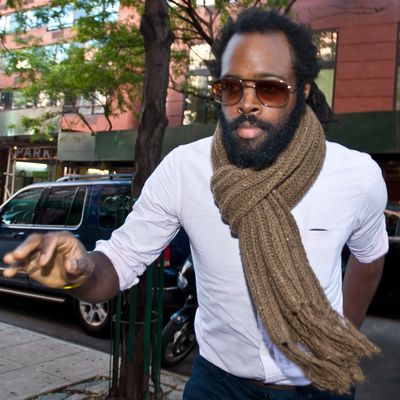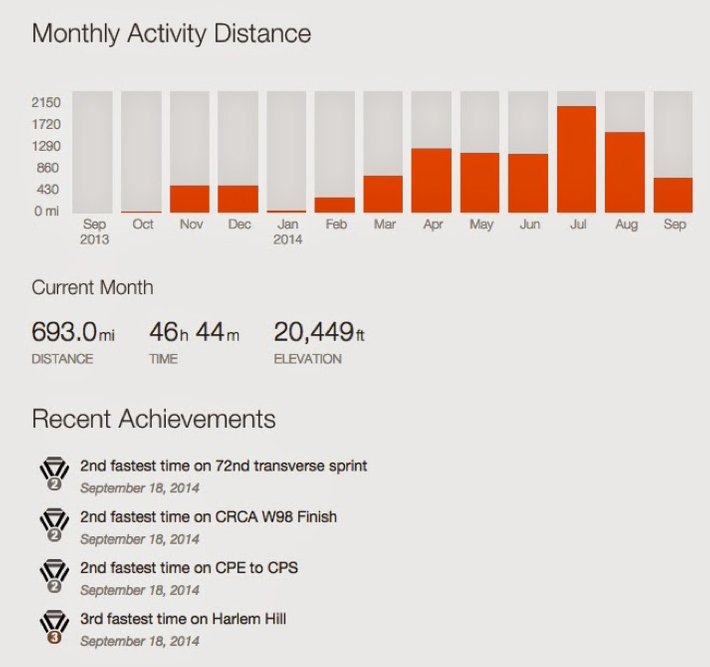
The details of last week’s bike accident that resulted in the death of 59-year-old pedestrian Jill Tarlov aren’t clear yet — why did cyclist Jason Marshall swerve? Did he rip by or only go the “8 or 9 mph” he claims? What even is the law about cyclists in car lanes? — but one thing all sides agree on is that Central Park is not the place to try to set speed records, particularly at midday during tourist season. Marshall, a jazz saxophonist and avid roadie who on average cranks out 250 miles a week, has been laid into for riding very fast at times in Central Park — and we know he had a habit of doing so because he fastidiously logged his rides on Strava, a popular social-media app that encourages cyclists to compete, even when they are riding alone. The question being asked by some in the cycling community: Did his use of the app play any role in the accident?
Strava is something like Foursquare for endurance athletes, or Nike+ on steroids. Each week, members log some 2.5 million GPS-tracked times for thousands of “segments” — that’s Strava-ese for the various hills, sprints, and descents that users map out, thereby transforming any stretch of pavement into a massively multiplayer online road race. Users vie to become KOM, a segment’s “king of the mountain,” and it can get quite serious. There have been at least two deaths associated with riders chasing KOMs in the Bay Area, Strava’s birthplace. In 2010, a cyclist flipped his bike attempting to reclaim a title and died; his family sued Strava for creating “a wild, wild West culture where [law-breaking] is encouraged and rewarded.” (The suit was eventually dismissed.) In 2013, another rider was convicted of manslaughter for zipping through a red light and mowing down a 71-year-old pedestrian because he “was already way too committed to stop.” He’d been using Strava during the ride, and there was speculation he was trying to shave off time so he could set a personal record.
Of all the bad situations for time-trialing, Central Park in the middle of the day — a biker-pedestrian war zone Scott Stringer once likened “to an area which has no local government, no rules” — is certainly one of the worst. The day before the crash, Marshall won four Strava achievements there — second-fastest finishes on three segments, third-fastest on another. Of course, this isn’t proof of anything other than his willingness to break the 25 mph speed limit (earlier that day he clocked 28.9 mph on West Drive, the same place where the tragedy occurred). But if he were riding extremely fast as part of personal time trial when Tarlov fatefully stepped from the curb, that complicates things.

As Robert Wright, a Financial Times reporter who blogs about cycling at the Invisible Visible Man, wrote of the accident that killed Tarlov: “To judge by accounts of Jason Marshall’s keen pursuit of records on Strava … his overall, incautious determination to maintain his speed may have been far more culpable than anything specific about his reaction on encountering people crossing the road.”
Last week, in response to lingering questions of this sort, Eben Weiss, a bike blogger who goes by Bike Snob NYC, launched a #nostrava Twitter campaign asking Strava-obsessed cyclists to stay off the app all weekend. The cycling community was pretty receptive:
Even as far away as Portland, the call was taken up:
Many of the app’s most popular and contested segments in New York are in located in Central Park, including Horse Shit Climb, a 0.2-mile hill whose current KOM completed the course in 19 seconds with a maximum speed of 38.9 mph. To date 12,862 riders have tried the segment a total of 341,180 times, a not-that-remarkable number for the park. [update: Tom Vanderbilt points out that this top speed was achieved in a sanctioned bike race. Certainly many other fast segment times were not, however.]
Strava’s critics say this cutthroat competition can’t but encourage risk taking. When a new KOM gets crowned, the usurped rider is notified instantly by the app. Then there’s “Strava-cide,” a term bike shop Competitive Cyclist defines as “To ride significantly harder during training than originally planned … in order to increase one’s ranking on the Strava Leaderboard.” In a statement to Daily Intelligencer, Strava says last week’s accident “is a tragedy and we offer our sincere condolences to all involved.” It reminds riders they must “use good judgment and understand the responsibility that they have to act within the limits of the law.”
While unwilling to comment on the record, several of Marshall’s cycling buddies tell DI that he’s a great guy and energetic cyclist, but also a relative newcomer to the sport — something that, in their minds at least, helps explain why he felt compelled last Thursday to, in Bike Snob’s words, “speed through the city’s most heavily used neighborhood green spaces and tourist attractions in the middle of the day, in beautiful weather, at exactly the time people head to the park.” One friend noted that, instead of riding in Central Park at that time of day, he would have crossed over into the Palisades and done River Road, a relatively deserted segment with just 9,498 attempts.

The tacit understanding with Central Park police is there’s no problem with cyclists going hard if they’re out by 8 a.m., says Cristy Guzzetta, a former New York Cycle Club president who’s ridden with Marshall. In fact, the club won’t approve group rides after that time, he says: The incidence of accidents before then is “just so remote — there’s no baby carriages, no tourists.” Matthew Hiller, a software engineer, NYCC member, and frequent Strava user, also hangs a lot of blame on Marshall for not abiding by the informal rules. He says it’s easy for early risers to “slow down, pass safely, and then speed up again when clear. This has been a common practice for decades, without incident.”
Weiss also said on his blog that he’s “loath to implicate Strava in any of this,” because despite his “strong dislike” bordering “on a moral objection,” it “did not invent the sort of selfish, moronic … weenie-ism” that potentially leads to tragedies like these, which are exceedingly rare anyhow (Tarlov’s being only the third pedestrian killed by a cyclist in New York City in five years). Weiss has also been loath to talk to media, which — largely via the Post — is currently seen by many in cycling community as waging a war on bikers, including labelling them “assassins in Spandex.” “To blame Strava at all,” he says, “is to take responsibility from the riders” Cycling advocates also see the discussion as something of a distraction from the larger issue, given 2014’s 90 biker fatalities caused by cars.
Guzzetta can’t see blaming a dangerous cycling environment on Strava, an inanimate “training tool.” It’s not that no Central Park KOM crowns come by daredevilry and possibly running a red light or two, but Guzzetta says that for these adrenaline junkies, there’s always something anyway. “Back 35 years ago, I could’ve told my buddies the distance on my odometer,” he says, “and it would’ve had the same effect.”
But last year, in Outside, Tom Vanderbilt explained how, even as novice rider, Strava sucked him in. The spiffy data segmentation was particularly addictive: “I find myself frantically filtering by age and weight, improving even more, looking hopefully for more categories,” he wrote. “Facebook has made oversharing mandatory, Google has mapped the world, and GPS units and power meters are de rigueur for serious cyclists.” Enter Strava, which can “unlock a kind of inner frontier of exploration” but has also led to the “bespoiling singletrack etiquette and terrifying casual riders and walkers on multiuse paths.”
Wright, the Financial Times writer, saw Tarlov’s death as moment to reflect on how all transportation is, ultimately, a communal act. “However solitary one might feel riding a bicycle or driving a car, one’s involved in an intense and complex series of social interactions,” he writes. “The scope for misunderstanding is so vast that it is always imperative to act cautiously.” The challenge for riders who use Strava, of course, is to always put caution above competitive fire.





























